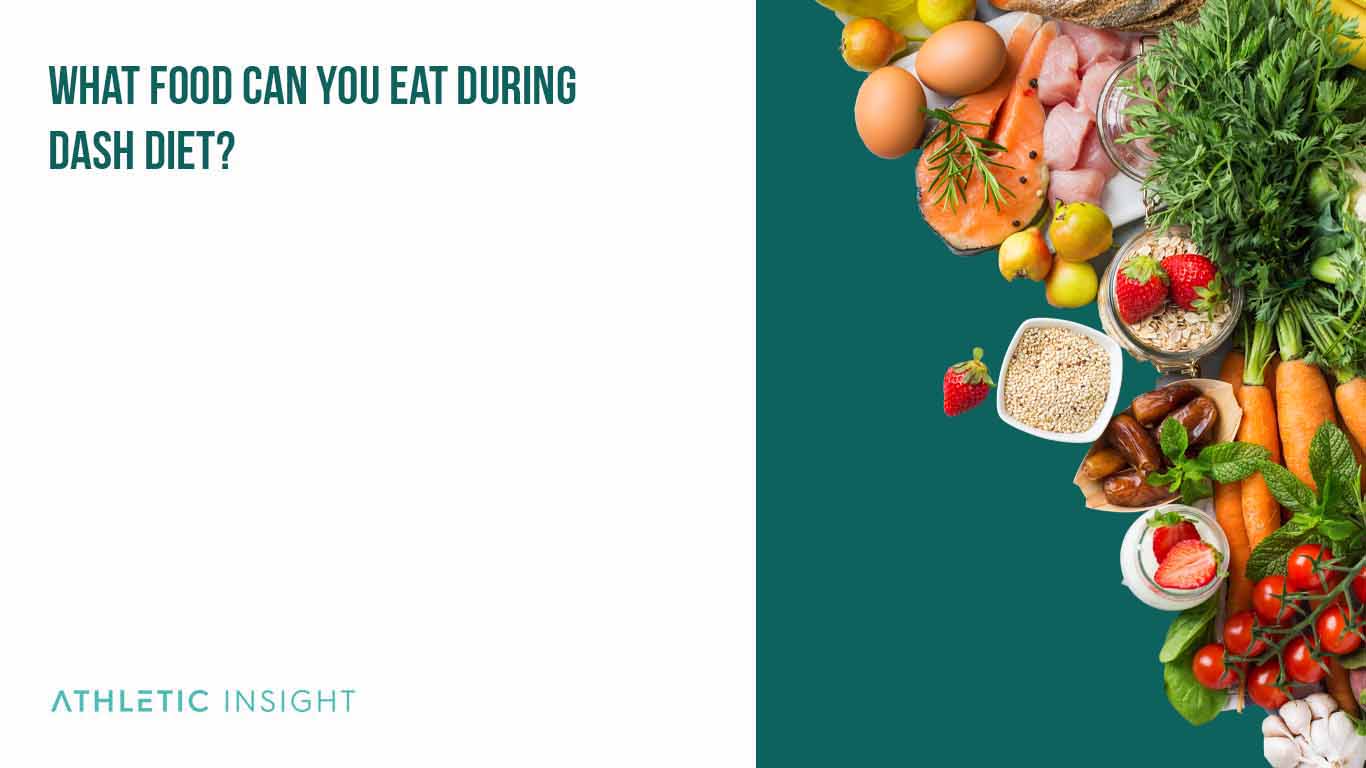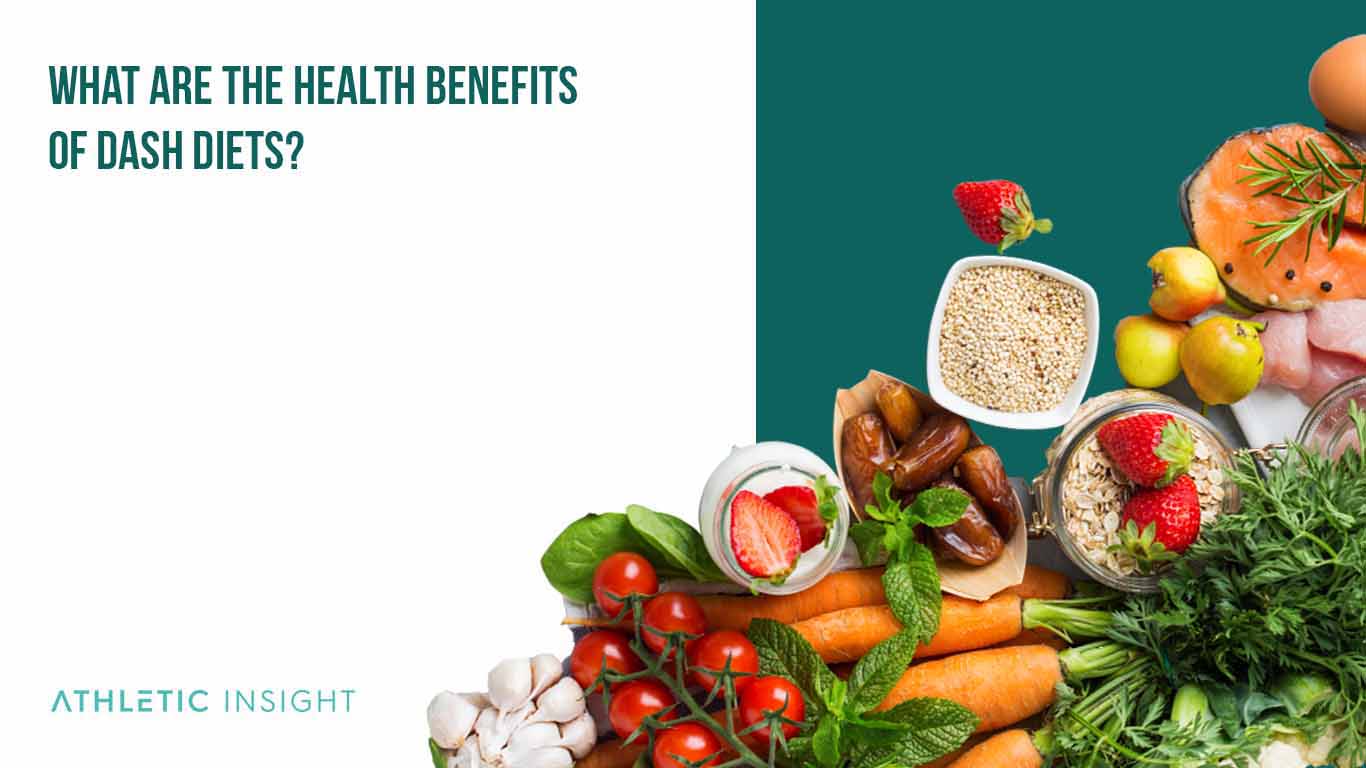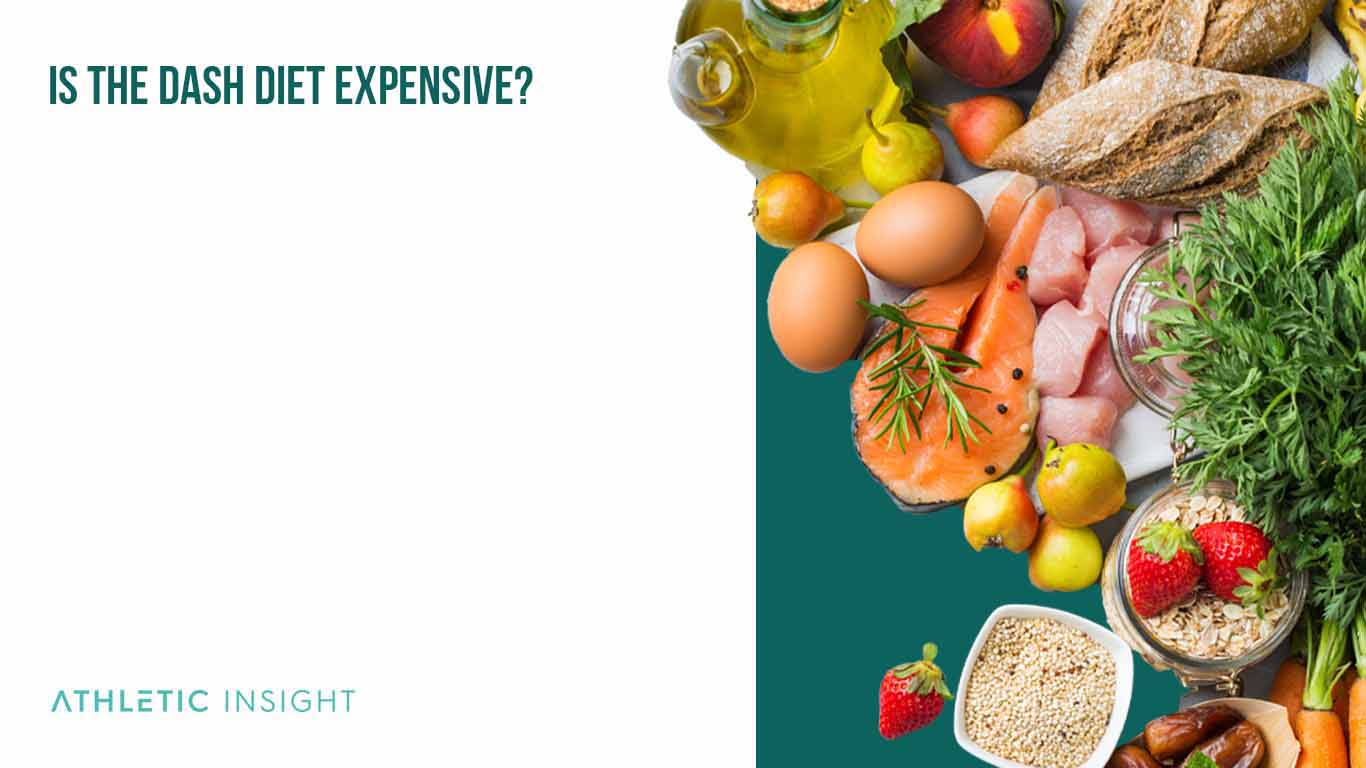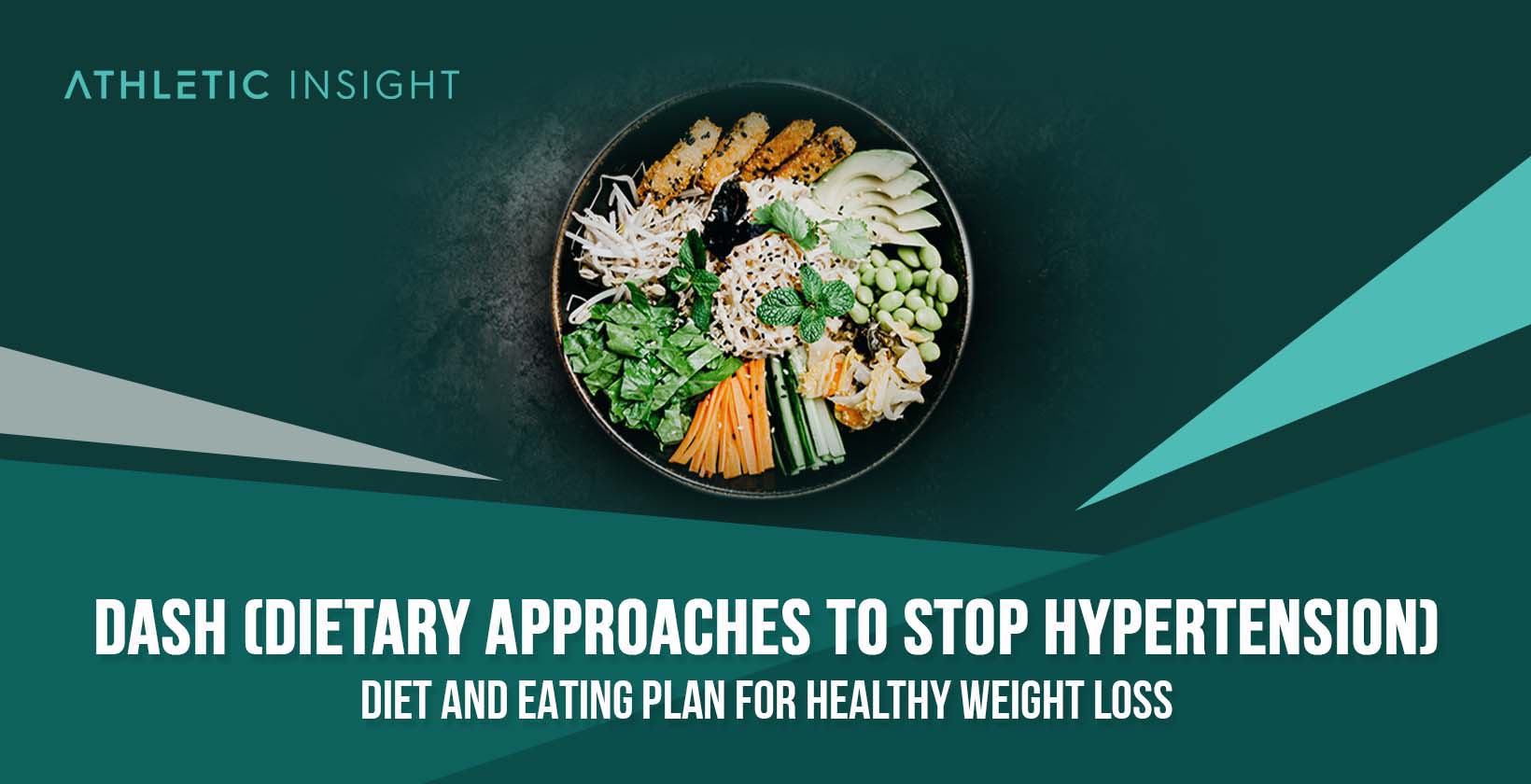The DASH (Dietary Approaches to Stop Hypertension) Diet is a heart-healthy diet designed to help reduce high blood pressure or hypertension. This diet promotes healthy eating by consuming potassium, calcium, and magnesium foods and limiting sodium, saturated fats, and added sugars.
This low-blood pressure diet was developed in 1997 by the National Heart, Lung, and Blood Institute (NHLBI). The DASH high blood pressure diet is recommended for adults to help nearly 47% of Americans reduce their high blood pressure and cholesterol.
The main benefits of the DASH blood pressure diet include lowering blood pressure and reducing cholesterol levels to healthy levels. By doing this, you reduce your chances of heart disease and stroke.
Excess sodium in the body changes how our bodies hold onto water. This change puts pressure on our cardiovascular system. It must work overtime to regulate itself by washing out the sodium. Hypertension is reversible by eating less sodium and more heart-healthy foods. DASH is one of the best diet plans.
What Are the Guidelines for DASH Diet?
Guidelines for the DASH diet instruction include the following items.
- Consume more fruits, vegetables, and low-fat dairy products.
- Eat low-fat dairy products such as low-fat milk.
- Reduce eating foods high in saturated fat, cholesterol, and trans-fat.
- Consume more whole-grain foods, fish, poultry, and nuts.
- Avoid eating sodium, sweets, sugary drinks, and red meat
By following these guidelines, the DASH diet effectively lowers blood pressure. The CDC recommends consuming less sodium and more potassium to help reduce hypertension.
1. Consume More Fruits, Vegetables, and Low-Fat Dairy Products.
Fruits and vegetables are low sodium and nutrient-dense, making them staples in the DASH diet plan. Low-fat dairy products like yogurt and low-fat milk are also acceptable on the DASH diet since they have less saturated fats than whole dairy products.
2. Eat Low-Fat Dairy Products Such as Low-Fat Milk
Low-fat dairy products like milk and unsweetened yogurt are satiating and low in sodium and saturated fat compared to whole dairy products. Cheese is notoriously high in its sodium and fat content so eat cheese in moderation.
3. Reduce Eating Foods That Are High in Saturated Fat, Cholesterol, and Trans-Fat.
High consumption of saturated and trans fats causes cholesterol levels in the body to rise. According to the American Heart Association, reducing saturated and trans fats from your diet is highly recommended for your heart health.
4. Consume More Whole-Grain Foods, Fish, Poultry, and Nuts.
With the DASH diet, replace processed foods with whole foods. Choose unprocessed grains, fish, and poultry to stick with the DASH diet. Be sure to check labels on products if they have them to ensure they are low in saturated fats and sodium.
5. Avoid Eating Sodium, Sweets, Sugary Drinks, and Red Meat
Avoid eating sodium, high amounts of sugar, and fatty red meats on the DASH diet. These all play a part in raising blood pressure and risking your heart health. Choose not to add extra salt to your food and eat red meat sparingly since it is high in saturated fat.
How to Regulate Sodium Intake for DASH Eating Plan?
To regulate sodium intake for the DASH Eating plan, forgo adding salt to foods and swap salt for sodium-free flavorings. Avoid the urge to add extra salt to food and add more vegetables, fruits, and lean meats to your diet.
Sodium is in nearly everything, but many processed products have added sodium. By consuming whole foods instead of processed foods, you are significantly more likely to stay within the recommendations for sodium intake.
The daily recommendation for sodium is 1,500mg-2,300mg. This value is approximately one teaspoon of salt.
What Food Can You Eat During DASH Diet?
In the DASH eating plan, you can eat many healthy and delicious food options that can help lower your blood pressure and prevent cardiovascular disease. Here are some of the food options you can eat during the DASH diet.

- Fruits
- Vegetables
- Low-fat dairy products
- Grains
- Nuts, seeds, and legumes
- Lean meats, poultry, and fish
- Condiments, seasonings, and spreads
Some foods that help lower blood pressure include foods high in Omega-3 fatty acids like chia seeds or salmon, citrus fruits like grapefruits, pumpkin seeds, berries, and more.
1. Fruits
Eat 4-5 low glycemic index fruits per day. These low-index fruits include cherries, grapefruits, pears, dried apricots, plums, and more.
Fruit contains sodium and sugars naturally. For example, a cup of sliced apples has about 1mg of sodium and 11g of sugar. One cup of processed apple sauce, on the other hand, has about 5mg of sodium and 36g of sugar.
2. Vegetables
Enjoy 4-5 servings of vegetables each day. Opt for green leafy vegetables like kale, spinach, broccoli, and collard greens. Half a cup of broccoli has many needed nutrients, including 230mg of potassium which strengthens and aids blood vessels in the body.
3. Low-Fat Dairy Products
You can consume 2-3 servings of fat-free or low-fat dairy products on the DASH diet. These products can be 1% like cottage cheese, milk, and skim yogurt. Light cream cheese or vegan cheeses are also good options. Peek at the label before buying to double-check the sodium and saturated fat content of the item you consider.
4. Grains
Consume 6-8 servings of grains per day like whole grains like millets, cracked wheat, and oats.
Why? The dietary fiber inside whole grains helps lower LDL cholesterol and improve cardiovascular health.
5. Nuts, Seeds, and Legumes
The DASH diet recommends lean proteins with healthy fats. Eat 4-5 servings per week of nuts, seeds, and legumes. Hempseeds and flaxseeds are recommended options.
Many nuts, seeds, and legumes contain Omega 3 and 6 fatty acids that help reduce triglycerides in the bloodstream, reducing the chances of cardiovascular diseases.
6. Lean Meats, Poultry, and Fish
The recommended serving for meat is six servings or less of 1oz per day. Stick to lean meats like skinless poultry or turkey, and eat fish rich in Omega-3 fatty acids. Soy products like tofu are great ways to increase daily protein levels without increasing your daily intake of saturated fat.
7. Condiments, Seasonings, and Spreads
Always check condiments, seasonings, and spreads for the sodium, sugar, and saturated fat content. While the DASH diet does not restrict you from eating any of these things, ensure that you stay under the recommended 2,300mg of sodium to prevent high blood pressure and stroke.
What Food Should Be Avoided Under DASH Diet?
The DASH diet aims to be a long-term and sustainable lifestyle choice. It is not heavily restrictive but asks you to be mindful of how much you eat. You should especially be aware of elements like sodium, saturated fat, and added sugars.
Some of the foods to avoid on the DASH diet include the following.
- Fatty meats
- Full-fat dairy products
- Sugar-sweetened beverages
- Sweets
- Salts
One teaspoon of salt is the recommended daily dose of sodium. Regular consumption of these fatty, sugary, and high sodium foods can increase the risk of hypertension.
1. Fatty Meats
Fatty meats like red meat are high in saturated fats and can increase blood cholesterol levels. When fat clogs our arteries, heart conditions such as strokes occur.
100-grams of a beef ribeye steak, for example, has around 52mg of sodium and 10.8 grams of fat. 4.2 grams are from saturated fat. While this does not exceed your daily limit, it is not recommended to consume fatty meats regularly on the DASH diet.
2. Full-Fat Dairy Products
Dairy products can be high in saturated fat, and overconsumption of full-fat dairy products can lead to heart problems. One tablespoon of salted butter contains 2mg of sodium and a whopping 7g of saturated fat. The same amount of margarine, on the other hand, contains 0mg of sodium and 2.2g of saturated fat.
3. Sugar-Sweetened Beverages
Avoid drinking beverages with added sugars on the DASH diet. Sugar can cause inflammation within the body. When a diet is high in sugar and saturated fat, our bodies need to work overtime to get blood and nutrients where they need to be since the pathways are constricted, blocked, or inflamed.
Opt for diet soda instead, sugar-free juices, homemade smoothies, and lots of water.
4. Sweets
Candy lovers may moan at hearing they need to cut down on their sugary snacks, but it is in your best interest. Sweets are high in calories and low in nutrition. By consuming sugary snacks instead of whole foods, you will fill up on foods that do not support your overall health.
To satiate your sweet tooth, switch cakes, cookies, and candies with fresh fruits or DASH diet recipes for sweets that offer more nutrition.
5. Salts
Salt is sodium, so adding extra salt is not recommended when avoiding sodium on the DASH diet. Salt is a natural preservative, so you will find sodium in nearly every processed product like canned fruit and vegetables, white bread, and chips.
Who Can Participate in Doing the DASH Diet?
The DASH diet is recommended for everyone. It is not a fad diet aimed at weight loss but instead prevents diseases that many Americans face due to imbalanced nutrition.
The DASH diet is for those suffering from high blood pressure, those who have had a stroke or heart surgery, and those with hypertension Type 1 or Type 2. It is also for people concerned about high blood pressure, strokes, and heart health in general.
The DASH diet is meant to be a long-term healthy-eating option that all families can incorporate into mealtime by being mindful of nutrient intake for all members.
What Are the Health Benefits of DASH Diets?
The health benefits of the DASH diet have been researched since the 1970s. The DASH diet is effective because of the following reasons.

- Lowers blood pressure
- Prevents high blood pressure
- Treats hypertension
- Reduces inflammation
- Prevents heart injury
- Prevents heart strain
Globally, nearly 26% of adults suffer from hypertension, and that estimate is on the rise. Just like a hot water tank can get jammed with minerals from the water, our arteries can become clogged from the high consumption of fatty foods.
Sodium further restricts these blood vessels, making it more difficult for our hearts to pump nutrients from head to toe. The DASH diet is a recommended way to maintain optimal cardiovascular health.
1. Lowers Blood Pressure
The DASH diet lowers blood pressure through the consumption of nutrient-rich foods that support the cardiovascular system and through the reduction of foods that do not.
Lowering sodium levels helps blood vessels stay healthy while lowering cholesterol and fatty foods keep those blood vessels free of blockages.
2. Prevents High Blood Pressure
People who do not have high blood pressure can prevent hypertension and diabetes by eating a DASH meal plan. A DASH diet is recommended for anyone with a family history of heart disease as a way of prevention.
3. Treats Hypertension
According to one study, a DASH diet can help treat hypertension for the over 50-million Americans who suffer from high blood pressure.
With a clear path for blood to flow through our veins, our blood pressure begins to normalize after eating a DASH diet for several months.
4. Reduces Inflammation
The DASH diet can significantly reduce inflammatory biomarkers within the body. Studies found that the effects of reduced inflammation were more promising after patients followed the DASH diet for longer than eight weeks.
This benefit is especially helpful for those with auto-immune disorders that cause inflammation of the heart or tissues in the body.
5. Prevents Heart Injury
Following a low-sodium DASH diet can help prevent heart injury. In one study, Biomarkers linked to heart damage and injury declined by 18%.
Because the heart does not need to work overtime to push blood through blocked or inflamed arteries, the likelihood of heart injury is reduced and heart health is improved.
6. Prevents Heart Strain
Like heart injury, a DASH diet is effective against heart strain and heart failure. In one study, DASH diet participants had a 37% lower rate of heart failure.
What Are the Disadvantages of the DASH Diet?
The DASH diet requires some know-how about nutrition and proper serving sizes. Some of the disadvantages of the DASH diet include the following.
- It requires following an allowed food serving.
- Types of food listed are not comprehensive.
- It may be difficult for someone who has lactose intolerance or a food allergy.
- It might cause bloating or gas in the stomach.
Despite these minor downfalls, the DASH diet is highly customizable if you remain within the recommended sodium levels.
1. It Requires Following an Allowed Food Serving
The food serving chart can be cumbersome to get through and remember. You should aim for 6-8 servings of grains, 4-5 servings of vegetables, 4-5 servings of fruits, 2-3 servings of low-fat dairy, and 6 1oz servings of meat or protein per day.
2. Types of Food Listed Are Not Comprehensive
The DASH diet recommends following the Dietary Guidelines for Americans; however, the food serving chart can be unclear in some places. While some foods are easy to categorize, others are more difficult. Such as an avocado, which has a high-fat content yet is considered a fruit.
3. It May Be Difficult for Someone Who Has Lactose Intolerance or a Food Allergy.
Depending on food allergies, you may find some options for DASH-friendly meals challenging to eat. However, since it is not highly restrictive, you can substitute. Look for low-sugar almond milk instead of dairy products if you are lactose intolerant.
4. It Might Cause Bloating or Gas in the Stomach.
As your body adjusts to the new diet, you may face some bloating or gas. If switching from red meats to plant-based proteins like chickpeas or quinoa, be sure to thoroughly wash them to remove saponins that produce gas.
How Much Sodium Intake Is Allowed in DASH Diet?
The Dietary Guidelines for Americans for sodium consumption is to keep it under 2,300 mg per day. The DASH diet recommends this also, and DASH diet plans restrict your consumption to 2,300 mg of sodium or less per day.
Some stricter DASH diets limit sodium consumption to 1,500 mg per day for patients with an exceptionally high risk for heart disease.
How Many Calories Can You Consume Under DASH Diet?
You can consume calories within the recommended range per age group with the DASH diet. For ages 19-30, this is 2,000-2,400 calories per day. Adults 31-59 should consume around 1,800-2,200 calories per day. 60+ should aim to consume approximately 1,600-2,000 calories each day. Calorie calculation is very important in dash diet.
What Are the Food Recipes Under DASH Diet?
The DASH diet does not restrict when you can eat. Instead, you must limit the amount of sodium and saturated fat consumed per day. There are many DASH diet recipes.
- Appetizers: Enjoy fresh vegetables with a creamy Tzatziki sauce or Skinny Ranch Dip. Other DASH-friendly appetizers include a DASH Diet Mexican Bake and this Quinoa Salad with Cherries.
- Main Dishes: Indulge without raising your blood pressure with this Shrimp and Nectarine Salad or Spiced Salmon recipe.
- Drinks: Have fun blending fresh produce for delicious and nutritious drinks. Try the DASH Diet Ultimate Green Smoothie or the Magic Blood Pressure Reducer Drink.
- Bread and Sandwiches: Bread and grains are permitted on the DASH diet. You can make Low Sodium Artisan Bread at home or keep an eye on grocery labels for low sodium bread options. Try this Open-Faced Garden Tuna Sandwich or a Clean Rueben Sandwich.
- Soups: Storebought soups are typically high in sodium. Make your own low-sodium soups like the DASH Diet Minestrone Soup or a Hearty Turkey and Vegetable Soup.
How Long Before You Can See the Results of the DASH Diet?
You can see the results of the DASH diet plan in approximately two weeks. This diet plan is a long-term lifestyle change, and it is recommended to continue following this diet for years to come.
Is the DASH Diet Expensive?
Yes, the DASH diet is expensive. However, it can be affordable. The DASH diet is costly compared to previous consumption of cheap, processed, and high sodium foods.

By switching to fresh veggies, fruits, and lean cuts of meat, your grocery bill is likely to go up while your blood pressure goes down. You can follow the DASH diet plan cheaply by purchasing in-season produce and buying in bulk.
Is the DASH Diet Effective?
Yes, the DASH diet is one of the best overall diets and healthy eating lifestyle changes. This diet has been around since the 1970s and is still a recommended diet for reducing hypertension today due to its effectiveness in lowering blood pressure and cholesterol levels.
What Are the Alternatives to the DASH Diet?
An alternative to the DASH diet is the Mediterranean diet. The Mediterranean diet also focuses on healthy eating choices.
Both diets encourage eating fresh fruits and vegetables, whole grains, nuts, and lean meats. The difference? The Mediterranean diet recommends drinking red wine (in moderation) for its antioxidant resveratrol, which helps maintain heart health.
Is DASH Diet the Best Diet for Hypertension?
Yes, the DASH Diet is the best diet for reducing hypertension. It was developed by the NHLBI specifically for combating the high cases of hypertension seen throughout the United States. Studies have shown how this low blood pressure diet is a first-line defense for systolic hypertension.
Are There Any Other Diets for Hypertension Besides DASH?
Yes, there are other diets that assist in hypertension besides DASH. The DASH diet was designed specifically for reducing hypertension. Another popular diet that helps reduce hypertension is the Mediterranean Diet.
The Mediterranean Diet focuses on consuming fresh products and limiting fatty foods to promote healthy living, but it is not solely focused on reducing hypertension.



